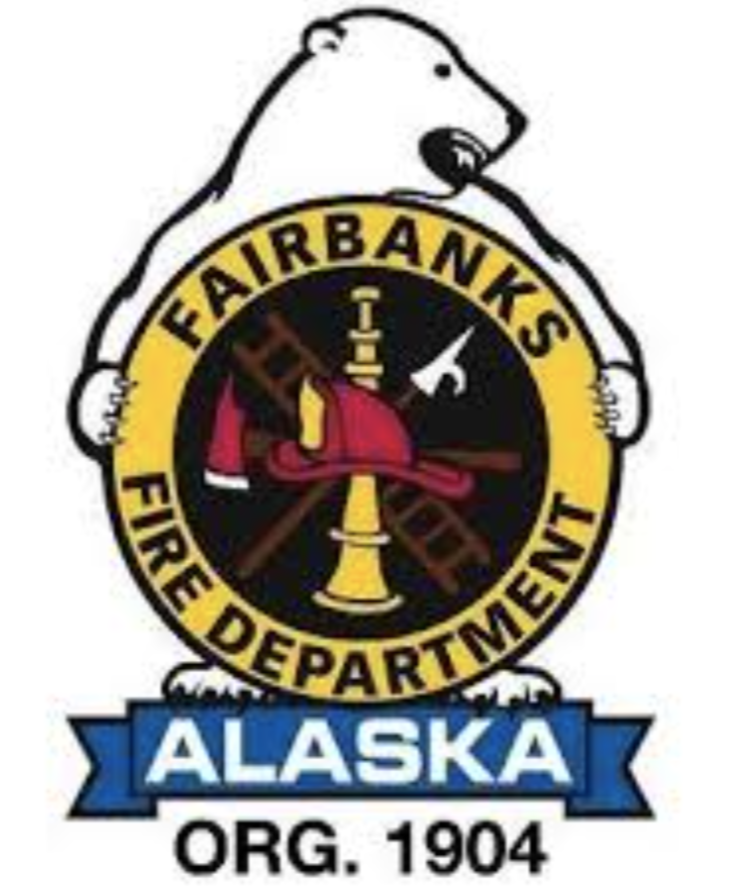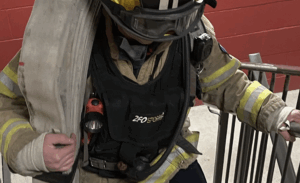Pursuing a career as a firefighter in Alaska requires dedication, physical fitness, and a commitment to serving the community.
Whether you’re aiming to join a department in Anchorage, Fairbanks, Juneau, or a smaller community, understanding the specific requirements and steps is crucial.
This guide provides a comprehensive overview of the pathway to becoming a firefighter in Alaska.
General Steps to Become a Firefighter in Alaska
Becoming a firefighter in Alaska takes dedication, physical and mental resilience, and a strong commitment to serving your community.
Embarking on the journey to become a firefighter in Alaska involves several key steps:
1. Meet Basic Eligibility Requirements
Ensure you satisfy the foundational criteria:
- Age and Education: Be at least 18 years old and possess a high school diploma or GED.
- Driver’s License: Hold a valid State of Alaska driver’s license.
2. Obtain Emergency Medical Certification
Many Alaskan fire departments require candidates to have Emergency Medical Technician (EMT) certification. This training equips you to provide essential medical care during emergencies.
3. Complete Firefighter Training
Enroll in a recognized firefighter training program. The Alaska Firefighter Certification Program ensures standardized training across the state. Training typically includes courses such as S-130 Firefighter Training, S-190 Introduction to Wildland Fire Behavior, and L-180 Human Factors on the Fireline.
4. Pass the Firefighter Entrance Exam
This critical step often comprises:
- Written Examination: Assesses knowledge in areas pertinent to firefighting.
- Physical Ability Test (PAT): Evaluates physical fitness and ability to perform tasks like hose drags and ladder raises. For example, the Anchorage Fire Department outlines specific events in their PAT.
- Oral Interview: Measures communication skills, judgment, and motivation.
5. Undergo Background and Psychological Evaluations
Fire departments conduct comprehensive background checks to assess character and history. Psychological assessments ensure candidates possess the mental resilience required for firefighting.
6. Complete a Medical Examination
A thorough medical evaluation confirms that candidates meet the health standards necessary for the physical challenges of firefighting.
7. Enroll in a Fire Academy
Upon successful completion of the previous steps, candidates may be invited to join a fire academy for intensive training. Institutions such as the University of Alaska Fairbanks Community & Technical College offer comprehensive programs that provide both theoretical knowledge and practical skills essential for firefighting.
8. Engage in Continuous Professional Development
The firefighting profession demands ongoing education and training. Pursuing advanced certifications and specialized training can enhance skills and open opportunities for advancement within the fire service.
Why Scoring High on the Firefighter Exam in Alaska Is So Important
No matter which department you’re applying to, passing the firefighter exam is critical — and scoring high is even more important.
Every hiring process includes three major tests:
- Written Exam – Determines your placement on the hiring list. A higher score = better chances of getting the job.
- Physical Ability Test (PAT or CPAT) – You must prove you can handle physically demanding tasks that mimic fireground operations.
- Oral Interview – This is your chance to show leadership, communication, and character beyond a test score.
Most departments create ranked hiring lists based on total exam scores. Being at the top of that list is the key to getting hired.
Becoming a Firefighter in Anchorage
The Anchorage Fire Department (AFD) has specific criteria for prospective firefighters:
- Educational and Age Requirements: Must have a high school diploma or GED and be at least 18 years old.
- Driver’s License: Possess and maintain a valid State of Alaska driver’s license.
- Physical Ability Test (PAT): AFD has a detailed PAT consisting of events such as Dry Hose Pull, Charged Hose Pull, and Roof Walk.
- Application Process: Submit an online application during open recruitment periods, including all required documents and certifications.
- Apply here: Prospective applicants can find more information on the City of Anchorage’s official firefighter website.
Becoming a Firefighter in Fairbanks
The Fairbanks Fire Department outlines the following steps for aspiring firefighters:
- Educational and Age Requirements: Candidates must be at least 18 years old and have a high school diploma or GED.
- Driver’s License: Must hold and maintain a valid State of Alaska driver’s license.
- Certifications: State of Alaska Firefighter I and EMT I certifications are required within one year of hire.
- Application Process: Monitor the City of Fairbanks job openings for firefighter positions and submit applications during open recruitment periods.
- Apply here: Prospective applicants can find more information on the City of Fairbanks’s official firefighter website.
Becoming a Firefighter in Juneau
The Juno Fire Department outlines the following steps for aspiring firefighters:
- Educational and Age Requirements: Candidates must be at least 18 years old and have a high school diploma or GED.
- Driver’s License: Must hold and maintain a valid State of Alaska driver’s license.
- Certifications: State of Alaska Firefighter I and EMT I certifications are required within one year of hire.
- Application Process: Monitor the City of Fairbanks job openings for firefighter positions and submit applications during open recruitment periods.
- Apply here: Prospective applicants can find more information on the City of Juneau‘s official firefighter website.
Additional Considerations for Firefighters in Alaska
- Residency Requirements: Some departments may require candidates to live within a certain distance or response time from the fire station.
- Continuous Education: Engage in ongoing training and education to stay current with firefighting techniques, equipment, and safety protocols.
- Physical Fitness: Maintain a high level of physical fitness to meet the demands of the job and successfully pass physical assessments.
Final Thoughts: How to Become a Firefighter in Alaska
Becoming a firefighter in Alaska — especially in major cities like Anchorage, Fairbanks and Juneau — is competitive but achievable. If you meet the eligibility requirements, earn your EMT certification, and excel on the firefighter entrance exam, you’ll have a strong chance of joining the fire service.
Stay focused, stay fit, and prepare for every step. The fire service needs people like you — committed, capable, and ready to protect and serve.












